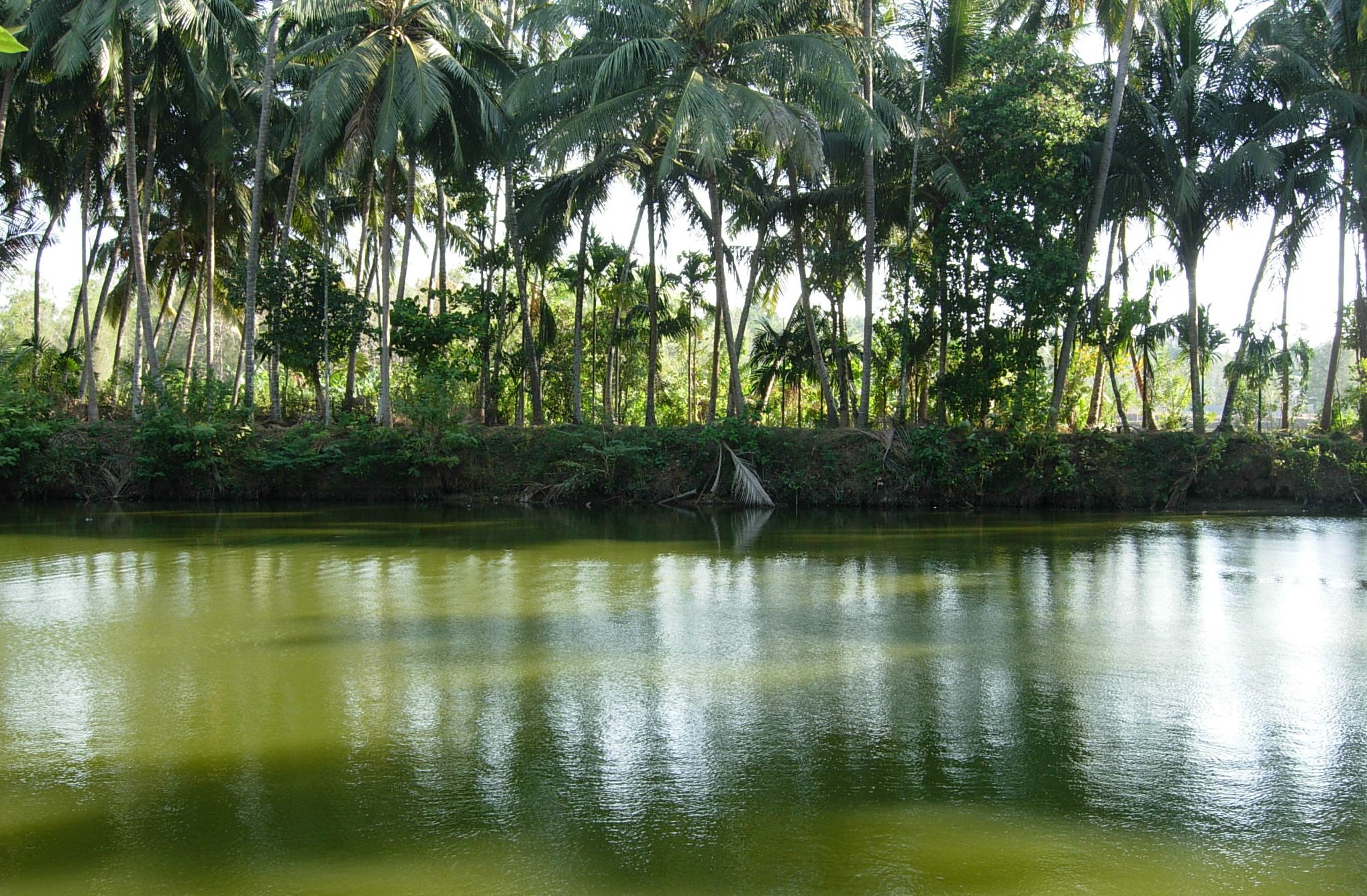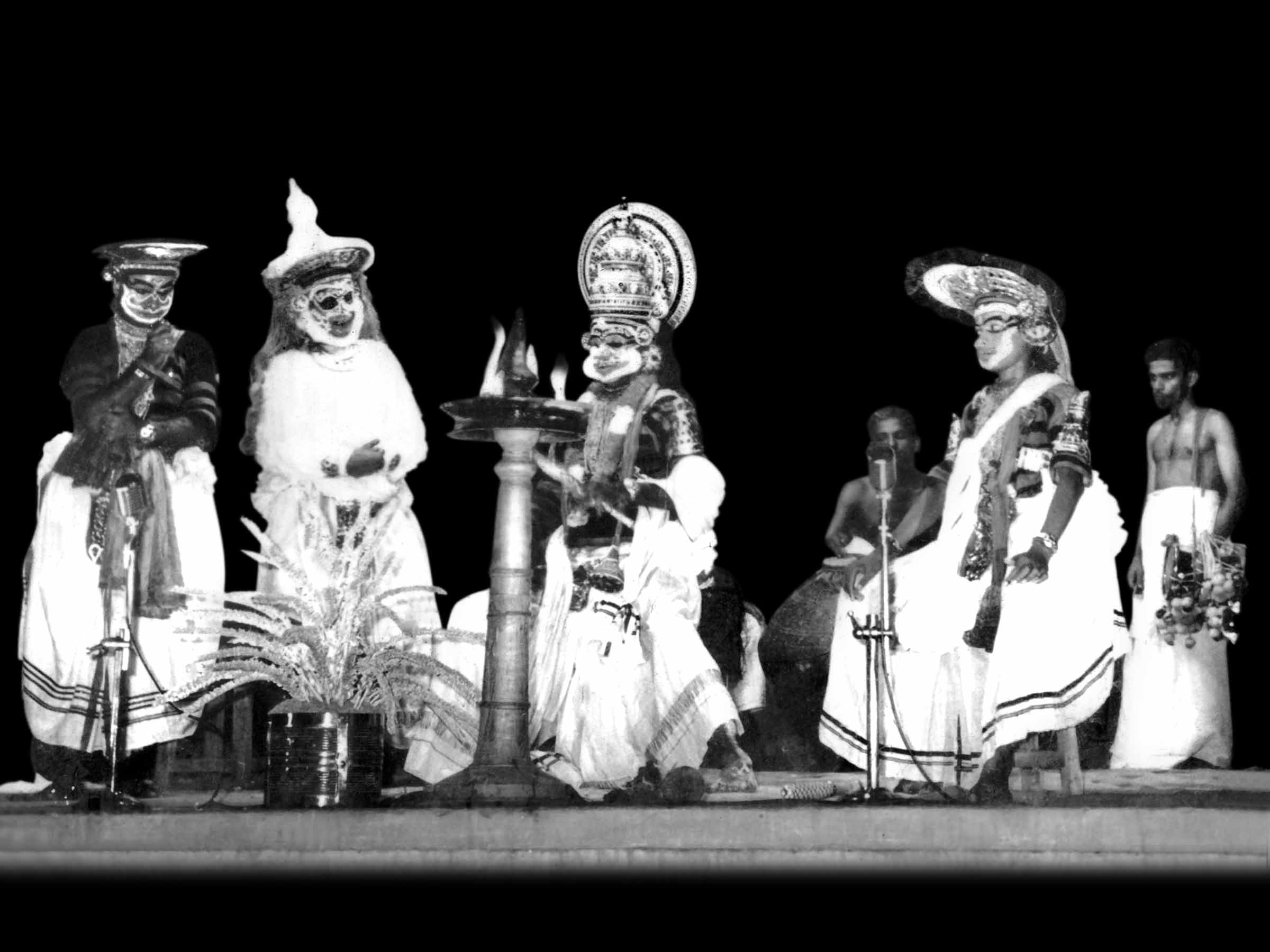|
Killikkurussimangalam
Killikkurussimangalam (also known as Lakkidi) is a village around 8 km from nearby town Ottappalam in Palakkad district of Kerala, south India. The river Nila ( Bharatapuzha) flows through the southern border of Lakkidi. Etymology The village got its name from the famous Lord Shiva temple- Sri Killikkurussi Mahadeva Kshetram situated in the village. The temple is very old and legends say it has been founded by the sage ''Sree Suka Brahma Hrishi''. Kunchan Nambiar's birthplace The village is the birthplace of famous Malayalam satire poet and founder of the Ottamthullal art form, Kunchan Nambiar (Rama panivada). The house where Kunchan Nambiar was born, Kalakkathu Bhavanam, is now a cultural centre, undertaken by Department of Culture of Kerala State Government. There is also a library situated there in memory of Kunchan Nambiar called ''Kunchan Smaraka Vayanasala'' - Kunchan Memorial Library. Koodiyattam and Chakyar koothu artist and noted Natyashasthra scholar Nātyāchārya V ... [...More Info...] [...Related Items...] OR: [Wikipedia] [Google] [Baidu] |
Mani Madhava Chakyar
Guru Mani Madhava Chakyar ( IAST: ''Māṇi Mādhava Cākyār'') (15 February 1899 – 14 January 1990) was a celebrated master performance artist and Sanskrit scholar from Kerala, India, considered to be the greatest Chakyar Koothu and Koodiyattam (ancient Sanskrit drama theatre tradition) artist and authority of modern times. He was considered as the authority of ''Abhinaya'' (the classical Indian acting style) and '' Nātyaśāstra''. Known as "the Emperor of Rasa-Abhinaya", he had an exceptional ability to perform ''Rasa-Abhinaya''. His ''Netrābhinaya'' was world-famous and he had the ability to act only with eyes. He was well versed in all the traditional Koodiyattams and all the ''prabandhas'' used in Chakyar Koothu. He was able to explain the concepts, methods and practices of Koodiyattam and Chakyar Koothu in a clear and authentic way. He had an in depth study of '' Nātyaśāstra'' of Bharata Muni, as well as ways of acting which were popular in Kerala. His kn ... [...More Info...] [...Related Items...] OR: [Wikipedia] [Google] [Baidu] |
Sri Killikkurussi Mahadeva Kshetram
Killikkurussimangalam (also known as Lakkidi) is a village around 8 km from nearby town Ottappalam in Palakkad district of Kerala, south India. The river Nila (Bharatapuzha) flows through the southern border of Lakkidi. Etymology The village got its name from the famous Lord Shiva temple- Sri Killikkurussi Mahadeva Kshetram situated in the village. The temple is very old and legends say it has been founded by the sage ''Sree Suka Brahma Hrishi''. Kunchan Nambiar's birthplace The village is the birthplace of famous Malayalam satire poet and founder of the Ottamthullal art form, Kunchan Nambiar (Rama panivada). The house where Kunchan Nambiar was born, Kalakkathu Bhavanam, is now a cultural centre, undertaken by Department of Culture of Kerala State Government. There is also a library situated there in memory of Kunchan Nambiar called ''Kunchan Smaraka Vayanasala'' - Kunchan Memorial Library. Koodiyattam and Chakyar koothu artist and noted Natyashasthra scholar Nātyāchārya Vi ... [...More Info...] [...Related Items...] OR: [Wikipedia] [Google] [Baidu] |
Kunchan Nambiar
Kunchan Nambiar was a prominent Malayalam poet of the 18th century (1705-1770). Apart from being a prolific poet, Nambiar is also famous as the originator of the dance art form of Thullal, most of his works were written for use in Thullal performances. Social criticism wrapped in humor is the hallmark of his works. Nambiar is one of the foremost comedians in Malayalam. Nambiar is believed to have been born at '' Kalathu Veedu'' at Killikkurussimangalam in Palakkad district of the south Indian state of Kerala;. He spent his early childhood at Killikkurussimangalam, his boyhood at Kudamaloor and youth at Ambalappuzha, and learnt Kalaripayattu and Sanskrit from such masters as Mathoor Panickar, Dronaballi Naicker and Nannikod Unni Ravi Kurup, before moving to the court of Marthanda Varma of Travancore in 1748; later, he served at the court of his successor Dharma Raja. By the time he reached the royal court, he had already established himself as a poet. the later part o ... [...More Info...] [...Related Items...] OR: [Wikipedia] [Google] [Baidu] |
Ottamthullal
Ottan Thullal (or ''Ottamthullal'', Malayalam: ഓട്ടൻ തുള്ളൽ) is a recite-and-dance art-form of Kerala, India. It was introduced in the eighteenth century by Kunchan Nambiar, one of the Prachina Kavithrayam (three famous Malayalam-language poets). The folksy performance, often laced with humour intended at criticism of society, is accompanied by a mridangam (a barrel-shaped double-headed drum) and/or the handy idakka besides a pair of ilathalam cymbals. History Like most Indian performing art forms, Ottamthullal has its principles influenced by the Natya Shastra (). The word ''Thullal'' means "to jump" or "leap about" in the Malayalam language. Legend has it that Nambiar, the poet, fell asleep while playing the mizhavu drum for a Chakyar Koothu performance, inviting ridicule from the chakyar. In response, Nambiar developed Ottamthullal, which raised prevalent sociopolitical questions and made a satire of human pedigrees and prejudices. The chakyar co ... [...More Info...] [...Related Items...] OR: [Wikipedia] [Google] [Baidu] |
Mani Damodara Chakyar
Mani Damodara Chakyar (Māni Dāmodara Chākyār; born 1946) is a Kutiyattam and Chakyar Koothu artist in Kerala state of south India. He is a nephew and disciple of legendary guru ''Nātyāchārya Vidūshakaratnam Padma Shri'' Māni Mādhava Chākyār. He belongs to the great Mani Chakyar tradition of Koodiyattam and Chakyar koothu. He studied ''Chakyar Koothu'' and ''Koodiyattam'' in the traditional way for more than 30 years under the direct guidance of Māni Mādhava Chākyār. He has studied Sanskrit and Nātyasāstra in the traditional way. He holds a Master's degree in Sanskrit literature as well. He used to be high school Sanskrit teacher in Kozhikode. He was a member of legendary guru Padma Shri Māni Mādhava Chākyār's Koodiyattam troupe which performed Koodiyattam outside Kerala for the first time. In that performance of ''Thoranayudham Koodiyattam'' (1962, Madras), he played the role of Vibhishana with his guru Mani Madhava Chakyar (as Ravana). He is an exponent ... [...More Info...] [...Related Items...] OR: [Wikipedia] [Google] [Baidu] |
Koodiyattam
Koodiyattam ( ml, കൂടിയാട്ടം; IAST: kūṭiyāṭṭaṁ; ) is a traditional performing art form in the state of Kerala, India. It is a combination of ancient Sanskrit theatre with elements of '' Koothu'', an ancient performing art from the Sangam era. It is officially recognised by UNESCO as a Masterpiece of the Oral and Intangible Heritage of Humanity. Origin Koodiyattam, meaning "combined acting" in Malayalam, combines Sanskrit theatre performance with elements of traditional koothu. It is traditionally performed in temple theatres known as ''koothambalams''. It is the only surviving art form that uses drama from ancient Sanskrit theatre. It has a documented history of a thousand years in Kerala, but its origins are not known. Koodiyattam and Chakyar koothu were among the dramatized dance worship services in the temples of ancient India, particularly Kerala. Both koodiyattam and Chakyar koothu originated from the ancient art form koothu, which is me ... [...More Info...] [...Related Items...] OR: [Wikipedia] [Google] [Baidu] |
Bharatapuzha
Bharathappuzha ("River of Bhārata"), also known as the Nila or Ponnani River, is a river in India in the state of Kerala. With a length of 209 km, it is the second longest river that flows through Kerala after the Periyar. It flows through Palakkad Gap, which is also the largest opening in the Kerala portion of Western Ghats. Nila has groomed the culture and life of South Malabar part of Kerala. It is also referred to as "Peraar" in ancient scripts and documents. River Bharathapuzha is an interstate river and lifeline water source for a population residing in four administrative districts, namely Malappuram and Palakkad districts, and parts of Palakkad-Thrissur district border of Kerala and Coimbatore, and Tiruppur of Tamil Nadu. The fertile Thrissur-Ponnani Kole Wetlands lie on its bank. Etymology The river has five names - Bharathappuzha, Ponnani River, Nila, Perar, and Kuttippuram River, of which the first name is more popular. The river meets the Lakshadweep Sea a ... [...More Info...] [...Related Items...] OR: [Wikipedia] [Google] [Baidu] |
Pond
A pond is an area filled with water, either natural or Artificiality, artificial, that is smaller than a lake. Defining them to be less than in area, less than deep, and with less than 30% Aquatic plant, emergent vegetation helps in distinguishing their ecology from that of lakes and wetlands.Clegg, J. (1986). Observer's Book of Pond Life. Frederick Warne, London Ponds can be created by a wide variety of natural processes (e.g. on floodplains as cutoff river channels, by glacial processes, by peatland formation, in coastal dune systems, by beavers), or they can simply be isolated depressions (such as a Kettle (landform), kettle hole, vernal pool, Prairie Pothole Region, prairie pothole, or simply natural undulations in undrained land) filled by runoff, groundwater, or precipitation, or all three of these. They can be further divided into four zones: vegetation zone, open water, bottom mud and surface film. The size and depth of ponds often varies greatly with the time of year ... [...More Info...] [...Related Items...] OR: [Wikipedia] [Google] [Baidu] |
Mani Damodara Chakyar-mattavilasa
Mani may refer to: Geography * Maní, Casanare, a town and municipality in Casanare Department, Colombia * Mani, Chad, a town and sub-prefecture in Chad * Mani, Evros, a village in northeastern Greece * Mani, Karnataka, a village in Dakshina Kannada district of India * Mani, Iran, a village in Kerman Province, Iran * Mani, Nigeria, a town in Katsina State, Nigeria * Mani, Tibet, a village in the Tibet Autonomous Region of China * Maní, Yucatán, a small city in Yucatán, Mexico *East Mani, a municipality in the Laconia regional unit, Peloponnese, Greece * El Mani, a community on the island of Puerto Rico * Mani Peninsula, a geographical and cultural region in Greece *West Mani, a municipality in the Messenia regional unit, Peloponnese, Greece People * Mani (name), ( fa, مانی), a given name and surname (including a list of people with the name) **Mani (prophet) (c. 216 – 274), an Iranian prophet ** Mani (musician) (born 1962), an English rock musician ** Mani (actor) ( ... [...More Info...] [...Related Items...] OR: [Wikipedia] [Google] [Baidu] |
Temple Pond Kerala
A temple (from the Latin ) is a building reserved for spiritual rituals and activities such as prayer and sacrifice. Religions which erect temples include Christianity (whose temples are typically called churches), Hinduism (whose temples are called Mandir), Buddhism, Sikhism (whose temples are called gurudwara), Jainism (whose temples are sometimes called derasar), Islam (whose temples are called mosques), Judaism (whose temples are called synagogues), Zoroastrianism (whose temples are sometimes called Agiary), the Baha'i Faith (which are often simply referred to as Baha'i House of Worship), Taoism (which are sometimes called Daoguan), Shinto (which are sometimes called Jinja), Confucianism (which are sometimes called the Temple of Confucius), and ancient religions such as the Ancient Egyptian religion and the Ancient Greek religion. The form and function of temples are thus very variable, though they are often considered by believers to be, in some sense, the "house ... [...More Info...] [...Related Items...] OR: [Wikipedia] [Google] [Baidu] |
Sanskrit
Sanskrit (; attributively , ; nominalization, nominally , , ) is a classical language belonging to the Indo-Aryan languages, Indo-Aryan branch of the Indo-European languages. It arose in South Asia after its predecessor languages had Trans-cultural diffusion, diffused there from the northwest in the late Bronze Age#South Asia, Bronze Age. Sanskrit is the sacred language of Hinduism, the language of classical Hindu philosophy, and of historical texts of Buddhism and Jainism. It was a lingua franca, link language in ancient and medieval South Asia, and upon transmission of Hindu and Buddhist culture to Southeast Asia, East Asia and Central Asia in the early medieval era, it became a language of religion and high culture, and of the political elites in some of these regions. As a result, Sanskrit had a lasting impact on the languages of South Asia, Southeast Asia and East Asia, especially in their formal and learned vocabularies. Sanskrit generally connotes several Indo-Aryan lang ... [...More Info...] [...Related Items...] OR: [Wikipedia] [Google] [Baidu] |





.jpg)


